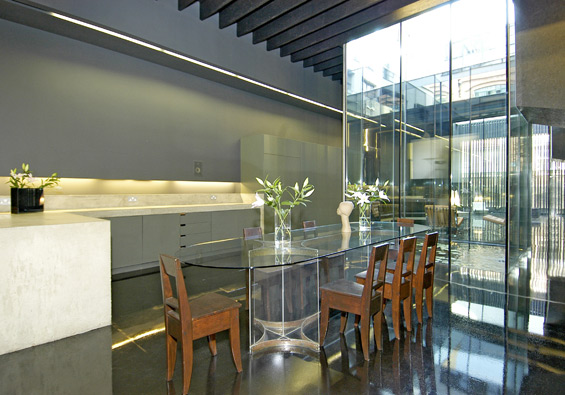
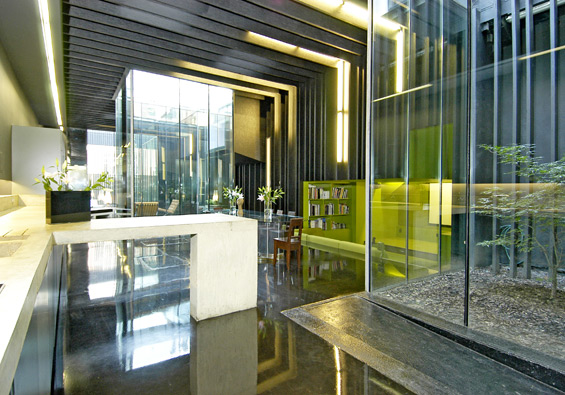
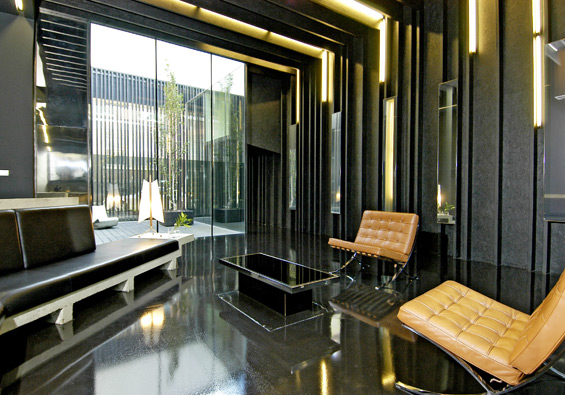
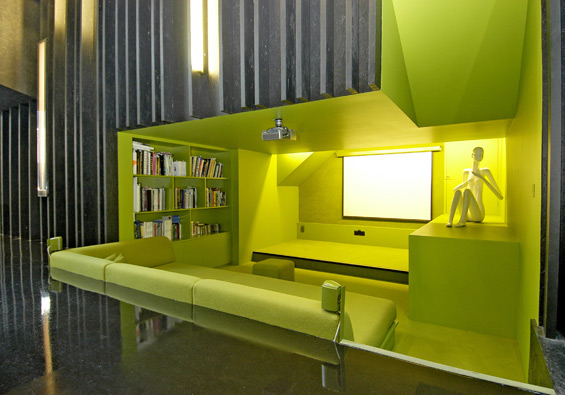
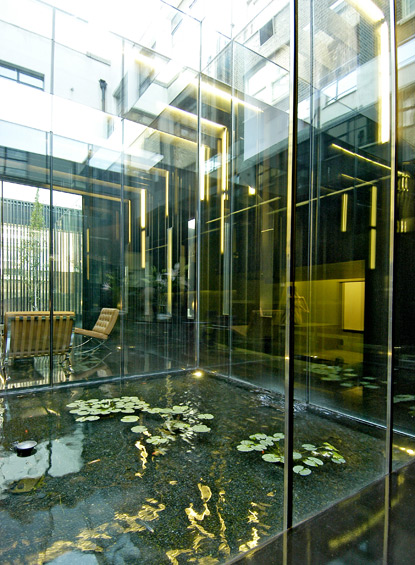
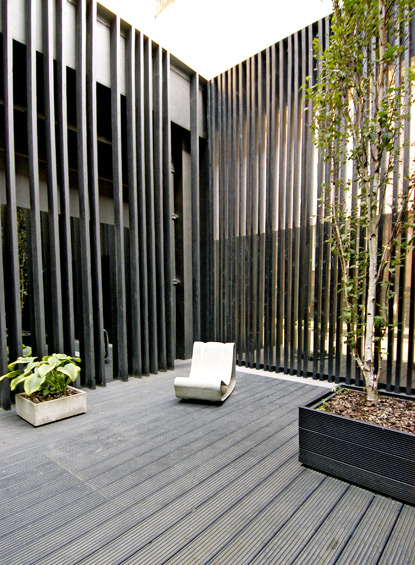
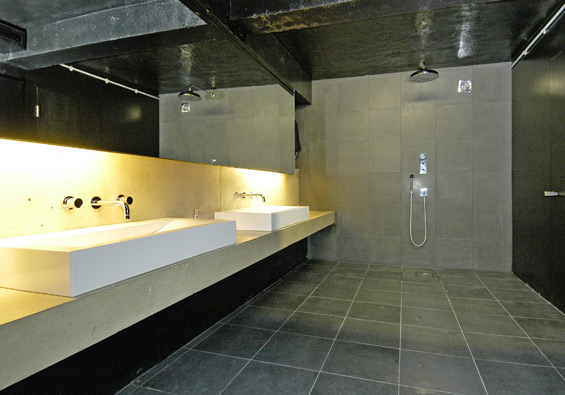
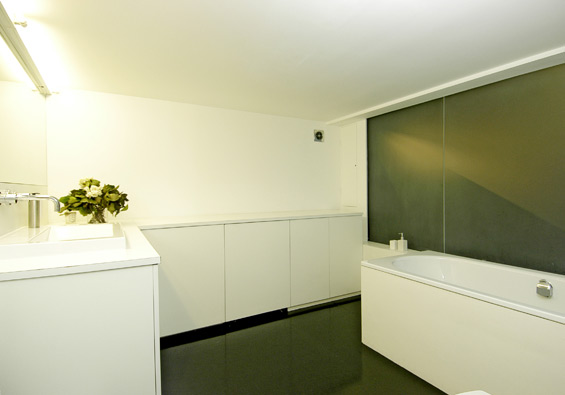
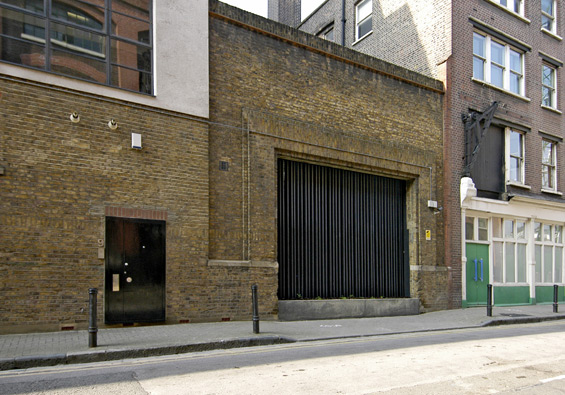
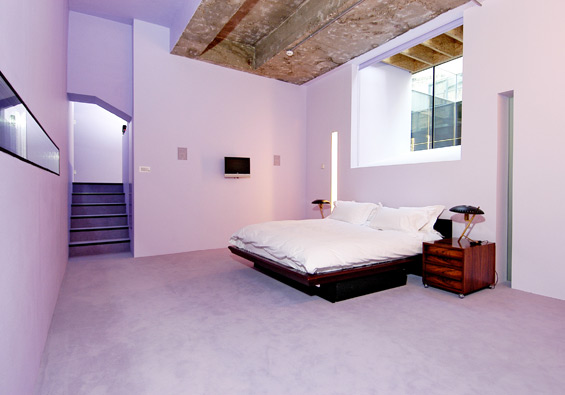
Lost House II
Crinan Street, London N1
Architect: David Adjaye
Register for similar homesDesigned by the internationally renowned architect David Adjaye, ‘Lost House’ is one of the most significant domestic projects of recent times.
It stands in the heart of King’s Cross, offering easy access to the railway station and new Eurostar terminal. ‘Lost House’ occupies the site of a former delivery yard adjacent to the Alaska Building. Its modest presence on the street gives little clue as to the spectacular interior within.
At the heart of the house is a huge reception room measuring approximately 60ft in length, which encompasses a kitchen, dining area and living area. Natural light is brought into the space via three large light wells, two of which culminate in courtyards, the other in a water garden. To one side of the reception room is a sunken cinema. There is also a guest bathroom and stairs up to a large bedroom, currently used as a studio.
The upper level contains a guest bedroom with en-suite shower room, and the master bedroom with dressing room, wet room and steam room. Running alongside the master bedroom is a dramatic enclosed swimming pool. The house also has a large private garage, which is accessed from York Way.
The interior has been designed with impeccable attention to detail. This is an inward-looking house that offers great privacy. The scarcity of external windows is compensated for not only by the use of light-wells, but also by the clever configuration of spaces and use of reflective surface materials, including a particularly luxurious black resin floor in the reception room. The reception is used by the current owners as a dramatic backdrop for catwalk fashion shows.
King’s Cross is currently the subject of enormous investment and extensive redevelopment. Adjacent to ‘Lost House’ is the studio of architect John Pawson, and state-of-the-art new offices for The Guardian newspaper are situated at the end of the road. The area is extremely well-served by transport links, including the new Eurostar terminal, King’s Cross mainline station, and King’s Cross Underground (Northern, Victoria, Piccadilly, Circle, Metropolitan, and Hammersmith & City lines), as well as frequent buses and taxis.
This is the first time that ‘Lost House’ has come to the market since its completion.
Tenure: Leasehold with Share of Freehold
Lease: 999 Years from May 1995
Council Tax: Band G
Please note that all areas, measurements and distances given in these particulars are approximate and rounded. The text, photographs and floor plans are for general guidance only. The Modern House has not tested any services, appliances or specific fittings — prospective purchasers are advised to inspect the property themselves. All fixtures, fittings and furniture not specifically itemised within these particulars are deemed removable by the vendor.




History
‘Lost House’ is covered extensively in a recent book entitled David Adjaye Houses (Thames & Hudson; ed. Peter Allison). The book describes how the building makes use of its site: “The east and west fronts of the Alaska building were at one time connected by a drive-through delivery yard with a solid platform along one edge, against which vehicles parked. For protection from the weather, the parking strip and platform were recessed into the section of the Alaska building above. In Lost House, the parking strip is occupied by two bedrooms and a sunken cinema, while the platform supports the concrete basin of a lap pool. The living space occupies the rest of the yard.”
We are then given an insight into the innovative configuration of spaces: “Belying its position at the bottom of a light well, Lost House is arranged as an expansive single-storey dwelling with a variety of internal and external views. The positions of the three parallel spaces described by the section of the delivery yard are both reinforced and broken down by the detailed organisation of the house; the walls marking the edge of each zone include a range of openings that make a series of transverse connections. To bring light into the deep section, the roof is punctuated by three courtyards and several rooflights, and the wall between the living space and the bedrooms includes a number of slit windows, which filter natural light in one direction and artificial light in the other.”
David Adjaye is one of the most renowned and critically acclaimed architects currently at work in Britain. He is perhaps best-known for his domestic commissions, having designed houses for the likes of artist Chris Ofili and actor Ewan McGregor. In recent times his work has attracted more worlwide attention, leading to commissions to design the Nobel Peace Center in Oslo and the Museum of Contemporary Art in Denver. He is also the architect behind the striking Idea Store in Whitechapel, east London.



